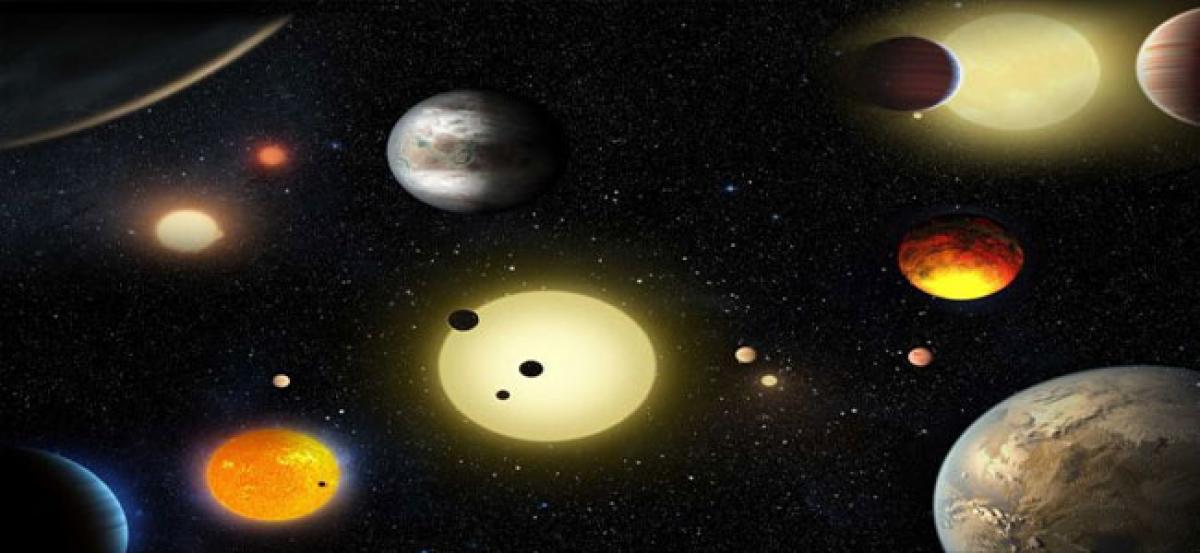Water-rich planets outside our solar system common

Water is likely to be a major component of those exoplanets which are between two to four times the size of Earth, suggests new research that may have implications for the search of life in our galaxy
Water is likely to be a major component of those exoplanets which are between two to four times the size of Earth, suggests new research that may have implications for the search of life in our galaxy. Water has been implied previously on individual exoplanets, but this work, presented at the Goldschmidt conference in Boston, Massachusetts, concludes that water-rich planets outside our solar system are common.
The new research, based on data from the exoplanet-hunting Kepler Space Telescope and the Gaia mission, indicates that many of the known planets may contain as much as 50 per cent water, which is much more than the Earth's 0.02 per cent (by weight) water content. "It was a huge surprise to realise that there must be so many water-worlds," said lead researcher Li Zeng of Harvard University.
Scientists have found that many of the 4,000 confirmed or candidate exoplanets discovered so far fall into two size categories -- those with the planetary radius averaging around 1.5 times that of the Earth, and those averaging around 2.5 times the radius of the Earth. For this study, the scientists developed a model for internal structures of the exoplanets after analysing the exoplanets with mass measurements and recent radius measurements from the Gaia satellite. "We have looked at how mass relates to radius, and developed a model which might explain the relationship", said Li Zeng.
"The model indicates that those exoplanets which have a radius of around x1.5 Earth radius tend to be rocky planets (of typically x5 the mass of the Earth), while those with a radius of x2.5 Earth radius (with a mass around x10 that of the Earth) are probably water worlds," he added. "Our data indicate that about 35 per cent of all known exoplanets which are bigger than Earth should be water-rich," he said, adding that surface of these exoplanets may be shrouded in a water-vapour-dominated atmosphere, with a liquid water layer underneath. The researchers believe that these water worlds likely formed in similar ways to the giant planet cores (Jupiter, Saturn, Uranus, Neptune) which we find in our own solar system.














